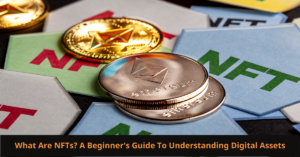Blockchain technology has revolutionized the financial sector, laying the foundation for more efficient, transparent, and secure systems. By eliminating intermediaries, blockchain simplifies processes like payments and transactions, reducing both costs and time.
While cryptocurrencies like Bitcoin initially put blockchain on the map, its applications extend far beyond digital currencies—into areas such as smart contracts and supply chain management, promising to transform core business operations.
The introduction of smart contracts, championed by platforms like Ethereum, has unlocked a range of possibilities. These self-executing agreements automatically trigger actions when pre-set conditions are met, cutting out the need for third parties.
For example, imagine a real estate deal where no paperwork or escrow services are required—the transaction completes seamlessly based on conditions encoded in the contract.
Major companies are already leveraging blockchain’s potential:
- JPMorgan Chase uses blockchain to streamline payments and ensure secure transactions.
- IBM is creating blockchain platforms for applications ranging from global trade to food safety.
- Mastercard is developing blockchain-powered digital payment solutions, making secure transactions accessible worldwide.
For small business owners and everyday users, blockchain’s appeal lies in reduced fees, faster transactions, and improved security. Whether easing cross-border payments or securing supply chains, blockchain technology has evolved into a practical tool for optimizing operations and addressing inefficiencies.
Understanding and embracing these shifts could empower businesses and individuals alike to thrive in a fast-evolving digital landscape.
With all of that in mind, let’s take a more in-depth look at what blockchain technology is capable of. You can use the quick links below to navigate through this tutorial:
- Enhancing Security and Privacy
- Transforming Healthcare and Data Management
- Pioneering Governance and Transparent Operations
- Blockchain and the Future of Cryptocurrency
- Looking Ahead
Enhancing Security and Privacy
Blockchain technology’s decentralized structure makes it an unparalleled solution for enhancing security and privacy. Unlike traditional systems that rely on centralized servers vulnerable to breaches, blockchain distributes data across a network of nodes.
Each transaction is encrypted and linked to the previous one, creating a chain that’s incredibly resistant to tampering.
This decentralized and immutable structure offers robust safeguards against unauthorized access and data breaches. Traditional systems often fall victim to cyberattacks because they depend on passwords and centralized databases.
Blockchain, by contrast, uses cryptographic techniques and complex algorithms to protect sensitive information, making it a more secure option for storing and sharing data.
Blockchain also supports privacy by allowing participants to remain anonymous. While transactions are visible on the ledger, the identities behind them are not, making it particularly useful in fields like healthcare and finance, where confidentiality is critical.
For example, in healthcare, patient records can be securely stored and accessed without compromising personal information, while financial transactions can maintain anonymity without sacrificing transparency.
With the rise of cybersecurity threats, blockchain serves as a proactive defense strategy. By integrating blockchain, businesses and individuals can not only prevent fraud and identity theft but also bolster their overall security posture in today’s digital-first environment.
Transforming Healthcare and Data Management
In healthcare, blockchain offers groundbreaking solutions for managing, securing, and sharing sensitive patient data. One of its most significant advantages is the ability to unify scattered medical records onto a single, secure platform.
This ensures that patient data is both accessible to authorized users and safeguarded against unauthorized access.
Pharmaceutical companies are also adopting blockchain to improve supply chain transparency and combat counterfeit drugs. By using blockchain to track medications from production to distribution, these companies can ensure the authenticity of products reaching consumers.
This innovation not only bolsters trust but also enhances public health outcomes.
Clinical trials, a cornerstone of medical research, can also benefit from blockchain. Immutable ledgers ensure that trial data remains untampered and transparent, preserving the integrity of research findings.
This facilitates better collaboration among researchers while safeguarding sensitive information.
Beyond healthcare, blockchain’s ability to enhance data integrity and interoperability makes it a valuable tool for industries dealing with large volumes of sensitive information. By adopting blockchain solutions, organizations can reduce costs, streamline operations, and improve outcomes—whether in patient care, research, or data management.
Pioneering Governance and Transparent Operations
Blockchain technology is ushering in a new era of governance and public administration, where transparency and accountability are paramount. Its decentralized and tamper-proof nature provides governments and organizations with tools to build trust and enhance efficiency.
One of the most promising applications is in voting systems. Blockchain can anchor votes to an immutable ledger, ensuring they are secure, verifiable, and transparent. This reduces the risk of election fraud and strengthens voter confidence by guaranteeing outcomes that truly reflect public will.
Resource allocation is another area where blockchain shines. By tracking the distribution of budgets, aid supplies, or public funds, blockchain minimizes waste and corruption, ensuring every transaction is transparent and accounted for.
Public records, such as land registries or identity documents, also benefit from blockchain’s secure and unalterable structure, reducing fraud and ensuring clarity in civic dealings.
Governments worldwide are beginning to explore blockchain integration, and the future points toward more widespread adoption across sectors. While challenges such as scalability and initial costs remain, the potential for transparent, efficient governance is undeniable.
By embracing blockchain, policymakers can redefine how trust is built and maintained, paving the way for more effective and equitable systems.
Top 3 Governance Applications of Blockchain:
- Voting Systems: Secure and transparent elections with verifiable outcomes.
- Resource Tracking: Enhanced accountability in budget and aid distribution.
- Public Records: Immutable and fraud-proof registries for land and identities.
Blockchain and the Future of Cryptocurrency
Cryptocurrency is where blockchain’s potential was first realized, and it continues to be one of its most transformative applications. Cryptocurrencies like Bitcoin and Ethereum have disrupted traditional financial systems by offering decentralized, peer-to-peer payment methods that eliminate the need for banks or intermediaries.
One of blockchain’s most notable contributions to cryptocurrency is its ability to ensure trust in a trustless environment. By relying on consensus mechanisms like proof-of-work (PoW) or proof-of-stake (PoS), blockchain enables secure transactions without central authority oversight.
This decentralization not only democratizes finance but also reduces transaction costs and increases accessibility for people worldwide.
Blockchain is also paving the way for innovations in decentralized finance (DeFi). DeFi platforms use smart contracts to offer services like lending, borrowing, and trading without intermediaries, creating a more inclusive financial ecosystem.
These platforms empower users to take control of their financial activities, often yielding higher returns than traditional banking systems.
Tokenization, another blockchain-driven innovation, is transforming how assets are owned and traded. By converting real-world assets—like real estate or art—into digital tokens on a blockchain, tokenization allows for fractional ownership and increased liquidity.
This could revolutionize markets by making high-value assets accessible to a broader audience.
Despite its potential, cryptocurrency faces challenges such as regulatory scrutiny, scalability, and environmental concerns tied to energy-intensive mining processes. However, advancements like layer-2 scaling solutions and the transition to more energy-efficient consensus mechanisms are addressing these issues.
For investors, businesses, and tech enthusiasts, understanding blockchain’s role in cryptocurrency is crucial. As adoption grows and technology matures, the line between traditional finance and crypto-powered systems will blur, heralding a new era of global economic transformation.
Looking Ahead
Blockchain technology is no longer a niche innovation—it is a transformative force reshaping industries and systems worldwide. Its applications in finance, security, healthcare, and governance highlight its versatility and potential to solve longstanding challenges.
While hurdles like scalability, regulatory concerns, and initial implementation costs persist, ongoing advancements promise to address these issues and unlock even greater possibilities.
For businesses, individuals, and governments, understanding and leveraging blockchain isn’t just about staying relevant; it’s about positioning themselves for a future driven by efficiency, transparency, and trust.
As the technology continues to evolve, its role in shaping the digital landscape will only grow, making it an essential tool for navigating the complexities of a modern world.













